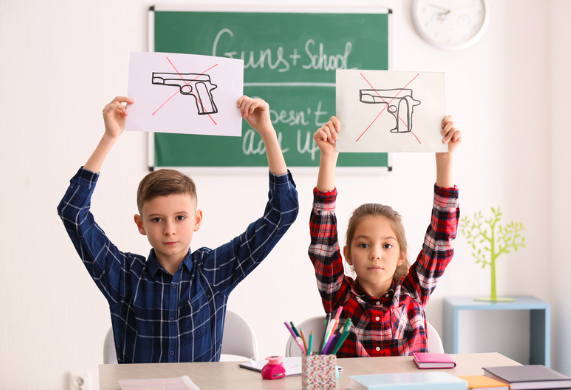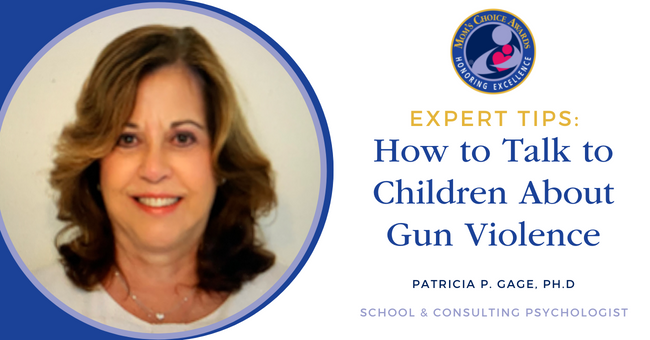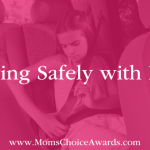 Patricia P. Gage, Ph.D
Patricia P. Gage, Ph.D
School & Consulting Psychologist
Facebook
 Recently, our society has endured profound grief and anger over the devasting loss of so many innocent children to senseless gun violence. Since the shooting in Columbine in 1999, it has been reported that more than 300,000 students have experienced school shootings in the course of their day. Over the last twenty years, these heart-wrenching events have increased exponentially. It is important that we remain dedicated to addressing the impact of gun violence on victims and their families. As we take the time to mourn and remember, it is also vital to address the social and emotional impact these events have on the survivors who were in those classrooms and also for the children who were not present but suffered by repeated exposure to such events through the media.
Recently, our society has endured profound grief and anger over the devasting loss of so many innocent children to senseless gun violence. Since the shooting in Columbine in 1999, it has been reported that more than 300,000 students have experienced school shootings in the course of their day. Over the last twenty years, these heart-wrenching events have increased exponentially. It is important that we remain dedicated to addressing the impact of gun violence on victims and their families. As we take the time to mourn and remember, it is also vital to address the social and emotional impact these events have on the survivors who were in those classrooms and also for the children who were not present but suffered by repeated exposure to such events through the media.
Given the recent events in Texas, we need more than ever to prioritize and work cooperatively with our community agencies to support their efforts in ensuring the psychological and physical safety of our children and families. Most importantly, we must remember that children look to adults in their lives for support, care and reassurance for their safety, particularly in difficult times. Adult reactions to traumatic events highly affect the way children react and shape their perceptions of their own sense of safety and emotional wellbeing. Remember the Swedish proverb, “kids don’t do what you say; they do what you do”. Kids learn best from your example, by watching you. They see how you handle stress, how you treat others and how you deal with your feelings. As challenging as it may be, you need to be positive role models and demonstrate well-tested strategies in dealing with gun violence. Furthermore, in order to take care of your children, you need to invest the time to take care of yourself. While there is no such thing as perfect parenting, you can strive to model the behaviors you want your kids to follow, and speak with your children about these shootings in a way that will make them feel safe and gradually learn to manage their own stress.
There are many suggestions by experts available for parents on how to talk to children about violence and address their fears. Many of the tips offered in this article come from the recommendations made by The National Association of School Psychologists and from my experience serving on the crisis team for our school district for a number of years. Regardless of the traumatic event, children always want and need the time to be heard first, spend time with peers to discuss what happened, and then engage in some type of action for closure. Whether it is to write a heartfelt note, pray with a group, plant trees, release balloons with messages to a loved one, or make large school-wide banners to write their thoughts or convey their feelings through drawings. It helps them to figure it out together with their peers. As a parent take the time to talk with your children about gun violence. They may have opinions, questions, and fears. Start by asking what they’ve heard and known about the event to give them a chance to communicate their feelings.
Discussions with your children
Allow their questions and curiosities to serve as your guide as to how much information and detail you should give them. While there is no perfect time, sometimes during a car ride, at bedtime, when you’re preparing dinner might be some appropriate times to consider. Children don’t choose to freely discuss their feelings. You may have to try some concrete activities such as drawings, picture books, or imaginative play with young ones to help them express their feelings. Older children may prefer writing in a journal, playing music, or working on an art project as a means of expression. When engaging them in conversation you should keep the explanations developmentally appropriate. For elementary school-age be brief, offer a simple explanation, and reassure them that school and their home are safe and the adults in charge are there to protect them. You don’t need to go into the psychological ramifications of gun violence. Give them a little tour of the home showing them security devices that you may have and how the doors are locked. Discuss the emergency drills that they learn at school, and safety measures in place while they are out on the playground. For the middle schoolers, you can expect more questions and they may challenge you about whether the measures currently in place are sufficient. You need to give them more time and the opportunity to come back with more questions and more reassurance that the school and the community are making sufficient efforts to ensure their safety. High school-age students are likely to have strong opinions about the causes of violence and have suggestions about what is needed to be done to ensure their protection. As parents, use this opportunity to emphasize the role they play in maintaining safe schools by following school guidelines, reporting strangers on campus immediately and threats they may hear from students to the school administrators or to their teacher. Reiterate the rule, “If you see something say something”. Discuss how they can access support in school and identify someone they trust to go to if they feel uncomfortable, threatened in some way, or think someone else may be in danger.
Points to cover in your discussions
Emphasize that school and their homes are safe places because parents, school personnel, and emergency responders in their community work together to keep them safe. Discuss the difference between reporting, tattling, or gossiping particularly with high schoolers. They need to realize what an important role they can play in preventing such events from happening by either directly or anonymously reporting something they know or hear to their trusted adult. It’s hard for kids to understand why anyone will resort to such senseless violence and take another person’s life. Be patient.
It helps to share with your children why staying within their familiar routine, and doing things they enjoy with friends and family can help keep them focused on the positive and keep all of you from worrying and feeling tense. One extremely important point to make is that when people engage in behavior that hurts others it may be because they are unable to handle their anger. Other factors are they may be under the influence of drugs or alcohol or suffering from mental illness. Discuss what teachers, police officers, and doctors are doing to get people the help that they need and keep them from hurting others. Share things that people are doing in the community to help and show compassion for others in connection with this event. Talk about what you can do as a family to show your gratitude and caring. High school-age children, emphasize the importance of the avenues they can use to get help if they are upset, angry, struggling with depression, or any emotion that they cannot control.
Validate their feelings
Let them know that all feelings are okay, especially when a tragic event occurs. Help them put their feelings in perspective and encourage them to express them appropriately. You can share what you may be feeling, or what your reaction was when you heard about the shooting but try not to appear overly emotional while
speaking with them. Try to deal with your own emotions and allow time for you to process the event before you try to help and explain it to your children. Most importantly, spend time with them, pay attention to them when they’re speaking, sit near them, hold them if they prefer and be a good listener. Don’t interrupt them.
Monitor the children’s media exposure
Kids use social media as their connection to everything and it can have an enormous effect on triggering or exaggerating a situation, magnifying a particular event, and their sense of fear. Listen for misinformation or misperceptions that they may have from their exposure and try to correct them gently without dismissing their ideas. Let them know that it is okay to disagree at times. Limit repeated television viewing of the same event. Preschoolers do not need to view the event. Elementary school-age children may want to gather information; however, you can limit the time, sit with them while they are watching the news coverage, and discuss what they have seen or read.
Frequent exposure to gun violence through video games and other media, over time, desensitizes kids by numbing them emotionally. Furthermore, it can cause nightmares and sleep problems, affect their school performance, lead to aggressive behavior and bullying, and cause them to imitate the violence. The frequent portrayal of guns glorifies their use and promotes using gun violence as an acceptable means of conflict resolution. Instead, the media should provide the message that guns are dangerous, should not be touched or be anywhere near kids for any reason, should be stored properly, and are not to be used to resolve conflict.
Look for signs of stress and anxiety
Children may not be able to express their feelings or have the language to label their feelings.
You have to monitor them closely for these signs of anxiety or discomfort:
- changes in their sleep pattern
- abrupt changes in behavior, such as frequent temper tantrums
- appetite changes
- headaches
- stomach aches
- spending too much time alone in their rooms
- isolating themselves from their friends
- too many “what ifs” and a preoccupation with bad things happening to them or the family
- frequent whining
- extreme sensitivity without reason
- school refusal
- difficulty separating from parents
Some of these symptoms should ease up when you provide reassurance but for other children, you may need to seek the help of a mental health professional either through their school or from your community resources.
Create Positivity
Focus on the positive by encouraging your child to use positive self-talk. For example, “This is hard for me, but I can do it”. Encourage her/him to think of one thing that is going well in his/her life and one thing he/she might be grateful for. Suggest listening to a favorite song or watching a heart-warming movie. Remind your children of their own resilience and provide examples of how they were able to get through challenging times in the past.
Being a positive role model for your children requires forethought and self-control. We often talk a lot about the need to support and discipline our children but as parents, we do need to put an equal emphasis on taking care and disciplining ourselves. Taking charge of our emotional health and maintaining emotional control is as important as being there for them. Avoid overscheduling yourselves, take the necessary time out to restore your emotional energy, take walks, and relax by doing progressive relaxation exercises at least twice a day, (in through your nose to a slow count of 4 and out through your mouth to a slow count of 4), listen to music, talk to a friend you trust, plan fun family nights for games and sharing humor. Maintain your routine as much as possible during these difficult times. It helps to make life more predictable. As always you want your home to be the family’s happy place.
Let’s hope that our lawmakers will take the necessary measures to stop the violence and improve access to more comprehensive mental health services in our schools and in our communities. We all have a role to play in this effort. The safety of our children needs to be our number one priority, the future of our country depends on it.
Recommended Reading
“Talking to Children About Violence: Tips for Parents and Teachers.” National Association of School Psychologists (NASP).
Gage, Patricia. Brain Smart Strategies for Helping Your Anxious Child, Brain Smart Academics, LLC, 2021

About Dr. Gage
Dr. Gage has been a practicing school psychologist for over 30 years. She holds a Bachelor of Arts degree in Elementary Education and Psychology from Hunter College, a master’s degree in School Psychological Services and a Ph.D., in Child/School Psychology from New York University. She has been an active member of her community as a compassionate advocate for children’s social and emotional wellness and the rights of students with learning differences. She has been instrumental in implementing several successful programs in Martin County, Florida, such as the Mainstream Instructional and Behavioral Consultation Program for the Martin County Schools, “Weebiscus”, a preschool program for Hibiscus Children Center and the Academic Center at The Pine School.
Dr. Gage has served on the Board of the Rotary Club of Stuart, The Pine School, Hibiscus Children Center, and Sandy Pines Residential Treatment Center. She was a tireless member of The Rotary Foundation/ Matching Grants, the Rotary Youth Leadership Assembly, and served as the mental health counselor for the Rotary Student Exchange Program. Dr. Gage is the proud co-founder of a second company, Hang In There, LLC, which writes and produces a series of guides for new parents. The company has already donated over 15,000 guides to organizations serving new parents. She was the 2003 recipient of the Soroptomist International Women of Distinction award and was selected Rotarian of the Year 2002-2003 and 2009-2010.
Pat is married to Dr. Joseph Gage, a local Cardiologist, and is the proud mother of two wonderful sons. She loves photography, gardening, and traveling with her family.
Find her at brainsmartacademics.com.
View all posts by Dr. Gage here.







One Comment on “How to Talk to Children About Gun Violence”
Thanks for sharing! The kids are learning